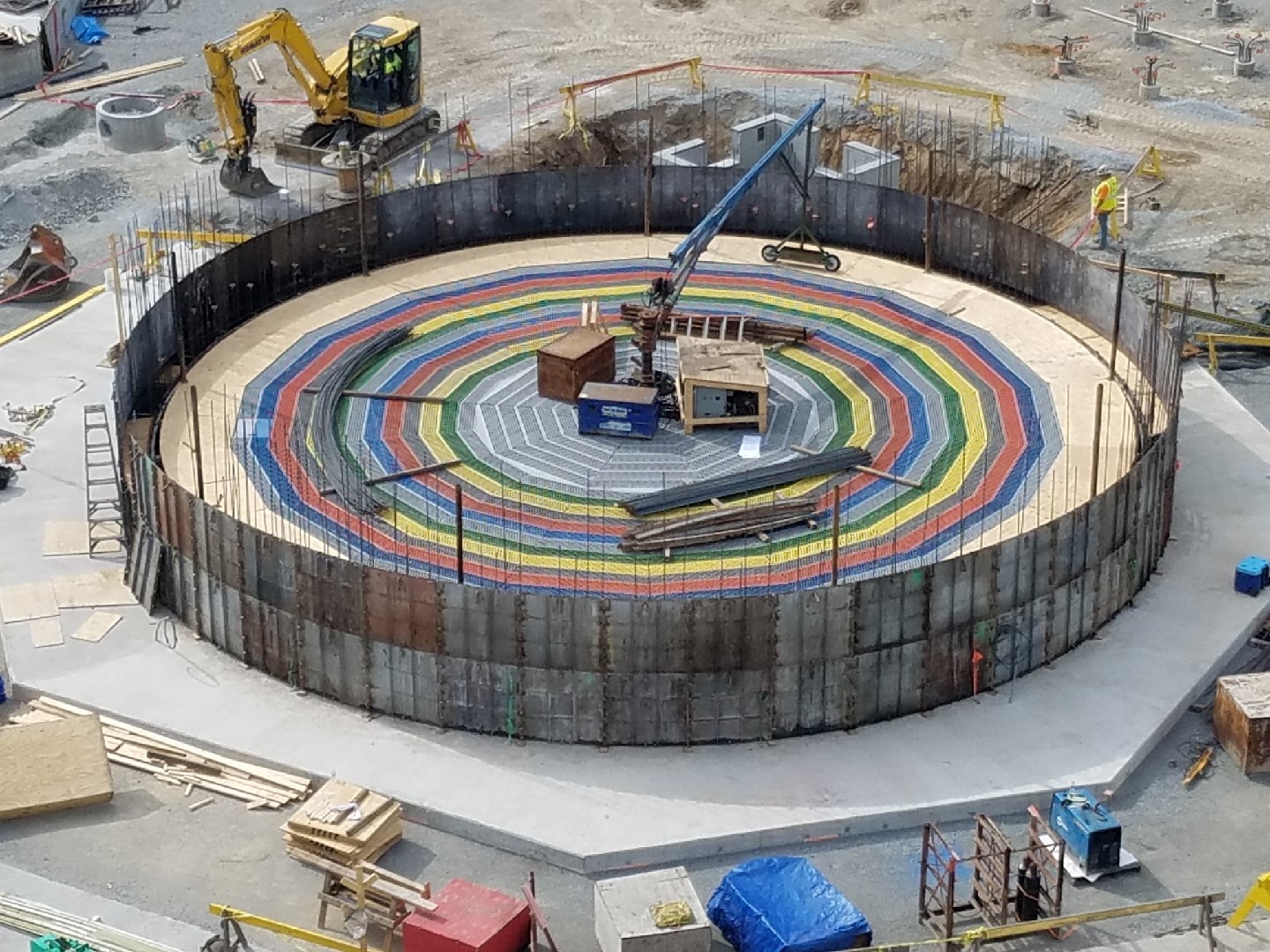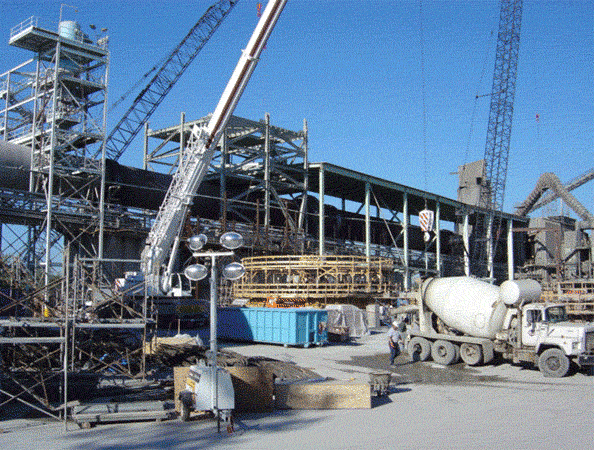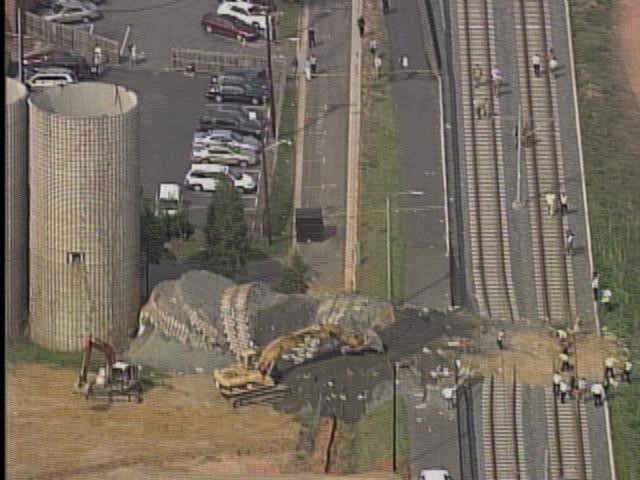Silo Repair Blogs
Early storage silos, primarily used by farmers for the bulk storage of corn, were built using wood, brick, stone or galvanized steel throughout the late 19th century. The use of concrete for the construction of storage silos revolutionized the industry in the early 20th century and expanded the use of storage silos beyond the farm. Today, both steel and concrete silos are commonly used in industry for the storage of ash, coal, lime, aggregate and more.
Concrete Silo vs. Steel Silo, Which One is Better?
Concrete silos are favored over steel silos because they are a superior cost savings solution that can be designed to resist internal abrasive wear, while withstanding pressures that would cause steel silos to buckle.
Over time, concrete storage silos are less costly to maintain – lifetime savings can reach 50-70% over steel construction. As steel structures battle costly corrosion issues – especially when contents have moisture or are corrosive – regular repair of rust areas as well as exterior cleaning and painting is required. In addition, steel silos often need internal repairs requiring the silo to be emptied, creating costly downtime and inconvenience.
Cement silos cannot rust and require no exterior painting or cleaning. Additionally, repairs are usually made to the outside of concrete silos without disturbing the inside contents.
Advantages of Concrete Silos
- Concrete silos are typically lower in cost than metal silos.
- Concrete silos have good resistance to corrosion, including both corrosion of internal walls due to the stored bulk solid and external corrosion caused by moisture. Metal corrosion is a well-known problem.
- No need for expensive painting of silos due to corrosion thus lowering operational cost.
- There is no concern about electrolytic effects at welds or liner connections.
- Careless detailing of metal walls may leave inward facing ledges or welds, which can obstruct flow and increase wall pressures. This is avoided with concrete.
- Concrete is better able to resist abrasive wear than most metals.
- Concrete is more robust and thus better able to withstand internal pressure loads and impact loads.
- Concrete has higher wall friction angles with most bulk solids than most metals. This results in higher frictional drag down the cylinder walls and hence lower pressures acting normal (i.e. perpendicular) to cylinder and hopper walls.
- There is no concern about weld quality or stress risers, such as bolted connections.
- There is no concern about leakage to the environment.
To learn more about the advantages of concrete silos over steel silos, read our concrete vs. steel safety bulletin.
What’s the Difference Between a Jumpform Silo and a Slipform Silo?
 |
 |
Jumpform Silos
Jumpform construction is an economical construction choice as the form can be set up and ready to make the first pour of concrete within a week. Due to an incremental schedule rather than the continuous schedule, costs are reduced approximately 20% over Slipform construction. Concrete storage silos from 10' to 65' in diameter can be built using this technique.
The Jumpform silo framework is reusable and takes just a few days to set up after delivery to the job site. Once set up, the form provides a safe, circular deck used to access and erect the concrete silo from the interior, allowing a smaller job site. When construction is finished, the form is quickly removed from the job site.
Since Jumpform silos are poured in a slow controlled process it allows additional time to complete a thorough quality control inspection of the form, steel reinforcements and embedments before concrete is poured.
Marietta Silos’ standard horizontal construction joint detail creates a leak-proof joint system. Jumpform construction is the best choice for concrete storage silos less than 65’ in diameter. Marietta Silos is the only Jumpform manufacturer in the country that complies with OSHA 125' scaffolding requirements.
Slipform Silos
Slipform silos are best for construction projects over 65’ in diameter. They are formed from a continuous, monolithic pour of the concrete walls, which creates a smooth, continuous outer appearance. The need for a continuous pour necessitates a 24 hours per day schedule, including nights and weekends, until the silo is completed. This contributes to a possible 20% increase in overall costs over Jumpform construction techniques under 65' in diameter.
The walls of Slipform silos are faster to pour than Jumpform silos. However, the time savings is offset by the time required to construct a custom-built form system for both the interior and exterior of the silo wall. Construction of the Slipform system takes approximately two months to create. Overall, the construction time is equal to the Jumpform.
Slipform silo forms are an integrated form and work deck system that includes an interior work deck and interior and exterior finishing scaffolding. The form is also supported by jack rods that are attached to the hydraulic jacks to slowly raise the forms during construction. The forms raise continually, about one foot per hour, with crews working both above and below the rising forms at the same time. Workers on the interior work deck continue to pour new concrete and steel reinforcement along with embedment as the form raises, while workers on the interior and exterior scaffolding hand finish the silo walls as they are exposed by the rising form.
Slipform construction is typically the best choice for more than 65’ diameter silo construction or if multiple concrete silos need to be created at one time.
Be sure to check out our full library of silo construction videos on silo maintenance and inspection videos on 
Collapses are often the result of preventable structural failures that would have been identified during routine inspection. Common problems that cause concrete structure and concrete silo failure include foundation deterioration, roof collapse due to roof beam structural issues, improper material filling and unloading procedures in silos, silo wall delamination or deterioration, silo discharge cone or bin floor issues. Steel silos suffer from corrosion and buckling, which can be inspected using wear-measure thickness ultrasonic gauges.

Structural Concrete Silo Repair Services
Silo Upgrades
Silo Post-Tensioning
Vertical silo spalling, cracking or wall separation due to overstress of the horizontal reinforcing are the main symptoms repaired with post-tensioning — a very common problem. To solve this issue, Marietta Silos will install high-strength post-tensioning strands around the wall exterior. These strands can replace all of the original steel reinforcing and, assuming the concrete is still sound, the silo can be returned to its original load capacity in an economical manner.
Silo Roof Repair
As with any structure, the roof of the silo generally receives the brunt of the physical and environmental abuse. Proper roof maintenance is needed to keep the materials within the silo safe and dry. Roofs are subject to abuse from overfilling, explosions and overloading, as well as environmental abuse.
Marietta Silos uses a variety of techniques to replace, repair or modify silo roofs including a roof-top coating. USA Silo Service has developed a unique silo roof and silo wall sealing method, a rubber product that applies to a concrete or steel silo roof to cover cracks, holes and equipment attachment areas.
This sealing method can be used for roof surfaces or for steel bolted silo joints to offer excellent protection against oxidation, humidity and corrosive environments. The rubberized coating also resists alkali, salts, abrasions and fumes.
Additional benefits of roof-top silo coatings:
- Not a floating membrane
- Offers excellent adhesion to aluminum, galvanized steel, painted surfaces, modified bitumen, steel joints and many other surfaces
- Excellent in sealing cracks, laps, fasteners and roof surface penetrations
- Available in all 50 states and in a variety of colors
The rubber coating reduces costly reapplications of surface protectants and can be applied to many surfaces including: metal buildings and roofs, built up roof (BUR) membranes, grain silos and bins, silo exterior walls, single ply roofs, urethane foam roofs and steel bolted joints.
Silo Rehooping
Marietta Silos has vast experience in rehooping concrete stave silos, whether they store foundry sand, lime, clay, cement, grain products or have been adapted for industry use. Older stave silos often have hoops that are corroded, damaged or missing altogether. In order to maintain the structural integrity of the silo, removing unsound hoops and/or replacing hoops with a full complement of new steel hoops may be necessary.
Rehooping can ensure your older stave silos regain or maintain their full storage capacity. A special waterproof coating may be applied after rehooping to ensure the long-term durability of the hoops.
Shotcrete-Gunite
Gunite is a mixture of sand, cement and water, which is applied with air pressure. Not only is it as strong as poured concrete, it is also very resistant to weather and chemicals and bonds 100% to well-cleaned concrete.
Silo Strengthening
Composite Fiber Reinforcement
Marietta Silos is a certified installation contractor for the Wabo® Composite System. This system uses composite fiber reinforcements to strengthen existing concrete and masonry structures for a variety of applications.
Available materials used include standard and vapor permeable resins, as well as specialized fibers with low conductivity, chemical, and impact resistance that may be mounted on or near the surface of the structure with no heavy equipment needed.
Steel Silo Repair
Steel silo repairs typically involve cutting out and replacing worn or corroded portions of a silo as well as relining damaged silo sections. Marietta Silos handles the full design and engineering of steel silo repairs, with safety as our first priority. Our experienced engineers understand the unique loading and load path requirements based on the silo type and stored material.
Silo inspections and preventive maintenance can prevent a silo collapse. Routine inspections and repair of silo walls and/or liners are important for preserving the structural integrity and ensuring that the silo is in proper working condition.
Visit AskMrSilo.com to ask Mr. Silo any of your silo-related questions and be sure to check out our full library of silo maintenance and inspection videos on  .
.
Reference:
- April 18, 2008: An 80 feet (24 m) tall silo adjacent to the line, just north of the New Bern Station, collapsed, with some of its debris causing minor damage to the track and disrupting service during the evening rush hour. Service was fully restored by the following day, but this marked the first disruption in service since the opening of the line in November 2007 due to conditions outside the control of CATS. [Wootson, Jr., Cleve R.; Steve Harrison (April 19, 2008). "Silo puts kink in LYNX". The Charlotte Observer. pp. 1A.]







